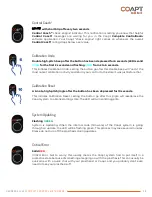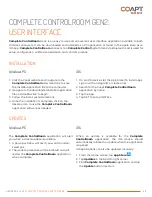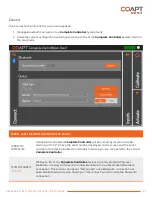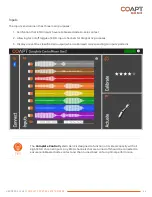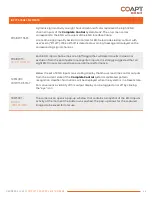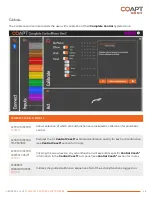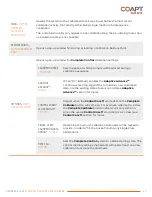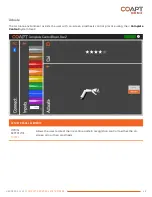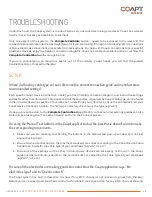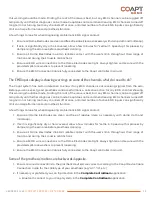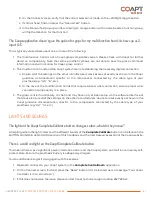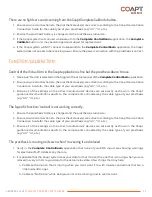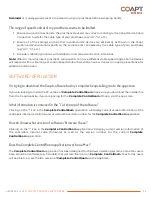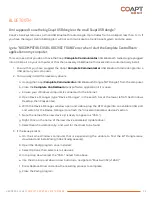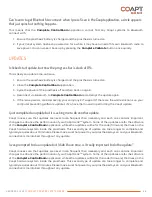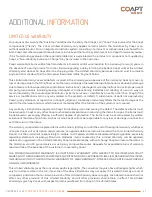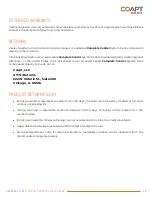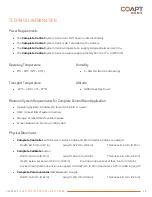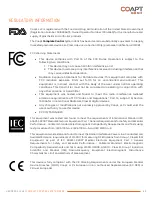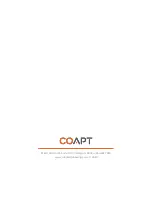
HANDBOOK (V
4.0)
COMPLETE CONTROL SYSTEM GEN2
53
Nothing works after Calibration.
1.
Ensure the prosthesis’ battery is charged and the prosthesis is turned on.
2.
Ensure all wired connections to the prosthetic device(s) are correct according to the Coapt Device Cable
Connection Guide for the cable type of your prosthesis (e.g. “H0”, “I4”, etc.)
3.
Ensure all of the settings on the other manufacturers’ devices are set exactly as shown in the Coapt
guidance documentation specific to the components connected by the cable type of your prosthesis
(e.g. “H0”, “I4”, etc.)
4.
Add additional calibration data.
When I try to control a specific motion, my prosthesis will sometimes instead do a different one.
This is commonly caused if the Coapt system has data for different motions that it sees as very similar.
Specifically, similar for the ones that are getting confused.
1.
Try adding additional calibration data to the motions that are causing the most inconsistency.
2.
Try calibrating with your prosthesis in slightly different arm positions.
3.
Try calibrating your motions with additional, and varied contraction intensities.
4.
Ensure that muscle contractions during any calibration feel different enough for each different
prosthesis motion.
Control Coach® is giving low star-ratings but control seems fine, is that okay?
Yes. Coapt is all about getting you great function.
Control Coach
®
can be a great help to achieve that but it also
assesses other key calibration things, such as making sure you are making calibration contractions at the
correct times.
When I calibrate everything works fine but if I move/ go about my day it sometimes changes.
There are a number of things that can change your muscle signals over time. Some are natural, like muscle
fatigue or how much sweat might be on your skin. Socket/fit changes can occur and the Dome Electrode
sensors might have shifted to a new place on your limb. Mentally, your intuitive control actions may have also
changed over time. Adding calibration data after these changes can very often help to bring back great control
and will also help the
Adaptive Advance
TM
system to build a more robust picture of how you wear, and control,
your prosthesis.
When I swap hands they seem to respond differently.
If you are swapping between a multifunction and an open/close hand, take care to remember that the
open/close device will have its own calibration data for “hand close” that differs from the grasps’ calibration data
of the multifunction device, and vice versa. If swapping devices for the first time, or from a new/blank calibration
state, you may need to provide calibration data for the differing actions.
If you are swapping between two devices of the same type (two different open/close hands for example), some
performance difference can be expected due to the different mechanical or settings nature of those hands.

